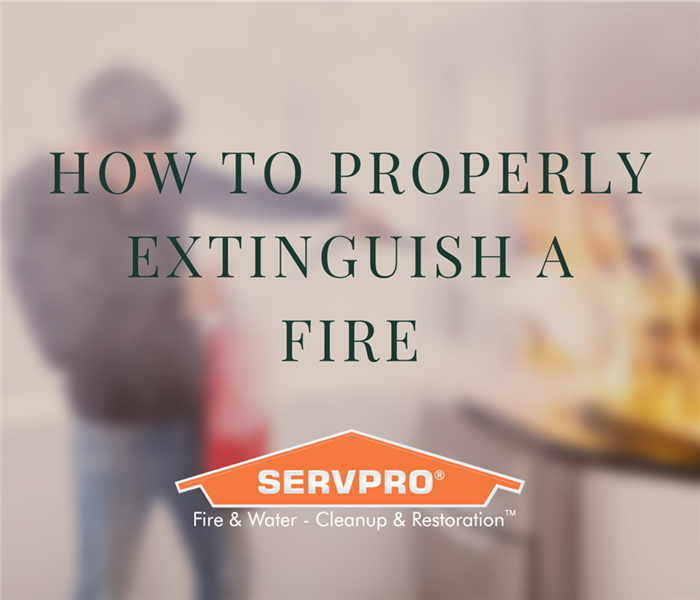How To Properly Extinguish A Fire
7/28/2021 (Permalink)
We’ve all seen fire extinguishers in places such as our homes, offices, or the places we visit in Charlotte, NC. Even though they are commonly recognized, we rarely consider having to use a fire extinguisher, or other means to put out a fire, in an emergency. However, it is very important to know how exactly to properly extinguish a fire, if an emergency does happen.
Portable fire extinguishers are classified by the type of fires they are designed to extinguish. Extinguishers are labeled on the outside with either letters or symbols to show which type of fire they are intended for.
To know how to properly extinguish a fire, It is necessary to distinguish the differences between types of fires. There are four different classifications of fires, each requiring a unique way to put them out.
Class A
Class A fires include ordinary solid combustible items. Some examples are paper, wood, cloth, and some plastics. Extinguishers with an A rating are designed to extinguish fires that involve these materials.
Class B
Class B fires are flammable liquids. Flammable liquids include alcohol, oil, gasoline, and grease. These types of fires are best smothered. Extinguishers with a B rating must put out these types of fires. Note that it is important to shut off the source of gas in a gas fire before extinguishing. It is safest to call emergency responders in gasoline fires.
Class C
Class C fires involve electrical equipment. Do not use water on these fires, as electrical shock could be possible. Use only Class C-rated extinguishers.
Class D
Class D fires are flammable metallic substances such as aluminum, potassium, and magnesium. These fires are common in industrial and laboratory environments. These fires should not be put out with water.
Class K
Class K fires are kitchen cooking fires that involve the combustion of liquids from food preparation. Greases, cooking oils, vegetable fat, and animal fat are all fuel sources in these fires.
Once you assure you are using the correct type of extinguisher for the fire, using a fire extinguisher can be done in a few simple steps. It can be difficult to think clearly during an emergency, so use the acronym PASS to remember the steps to using a fire extinguisher:
Pull the pin.
Aim low. Point the extinguisher at the base of the fire.
Squeeze the lever slowly and evenly.
Sweep the nozzle from the side to side as many times as needed. Keep the nozzle aimed at the base of the fire.
Using a fire extinguisher is easier than it may initially seem, and knowing how to use one can help you in an emergency. SERVPRO of South Mecklenburg County can help you with your home or business’ damage after an emergency. Simply call at (704)-840-6112.
Want to know more about us? Please check out our other pages:
LinkedIn Facebook Instagram Twitter Angie's List BBB Youtube Pinterest





 24/7 Emergency Service
24/7 Emergency Service
